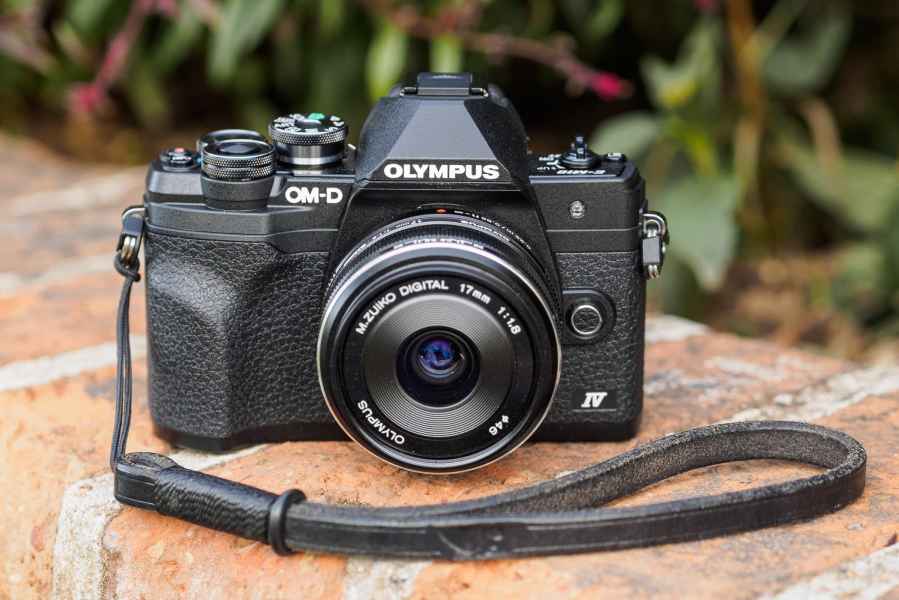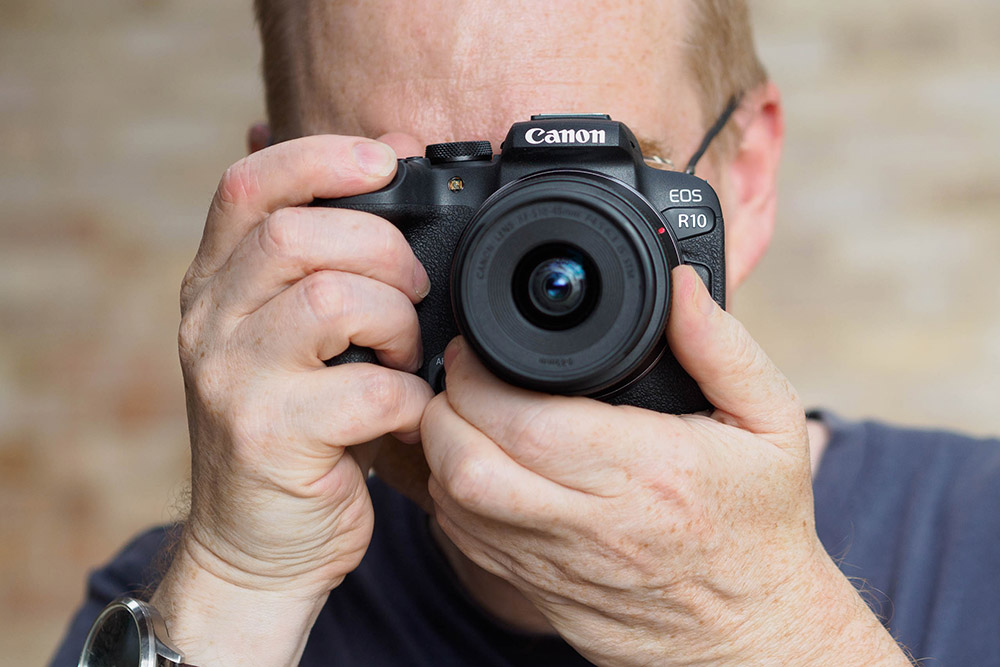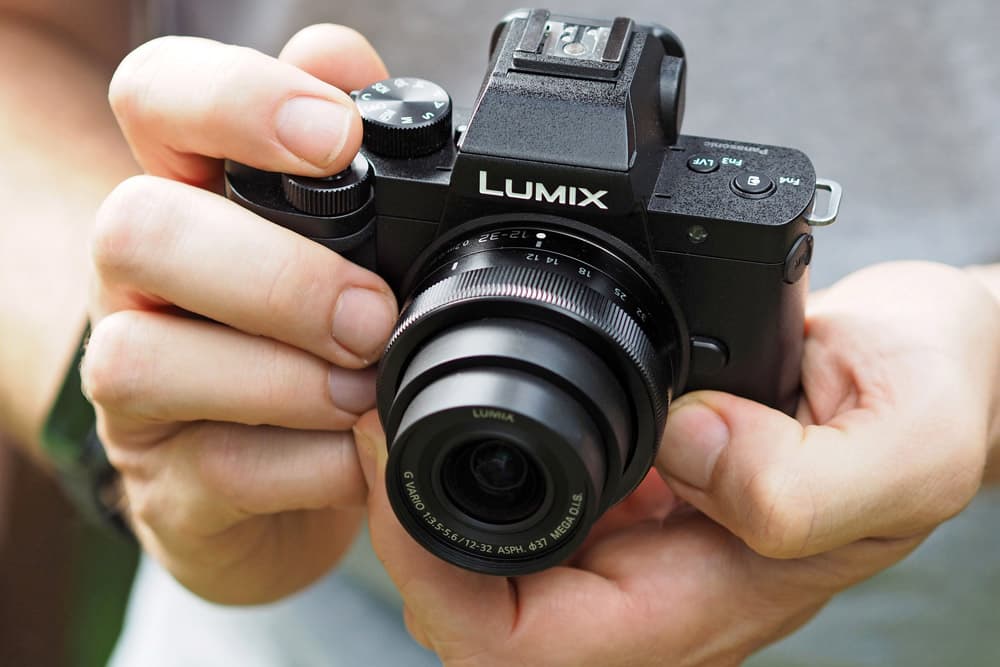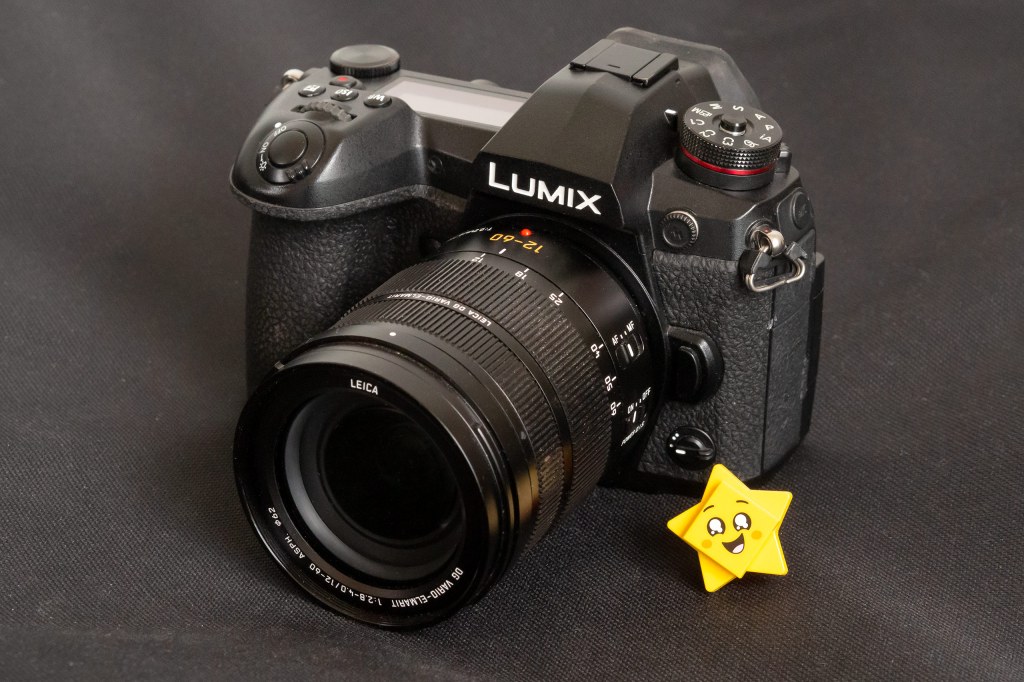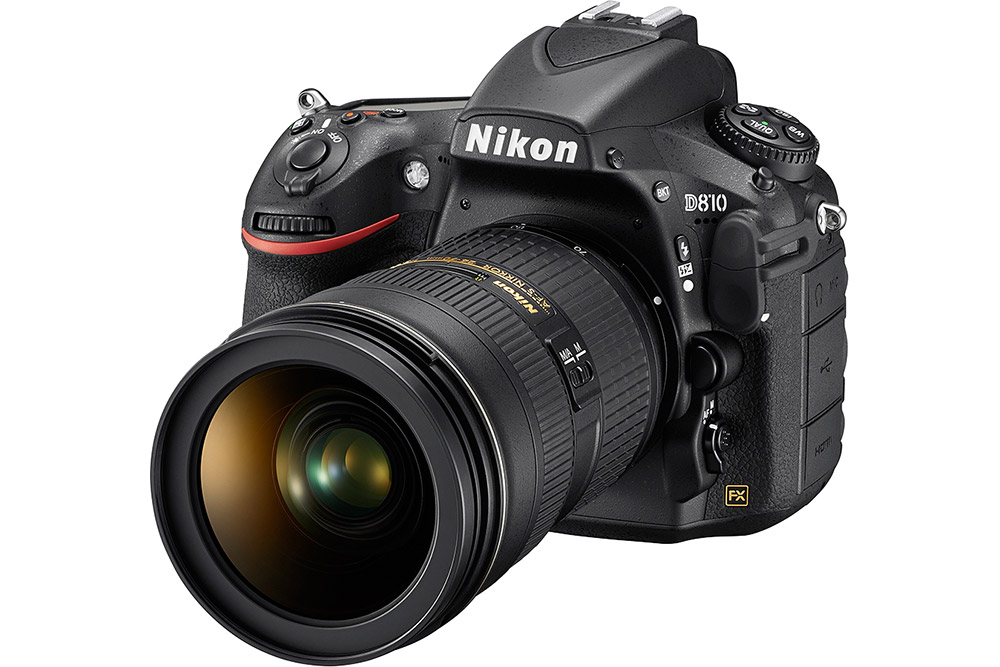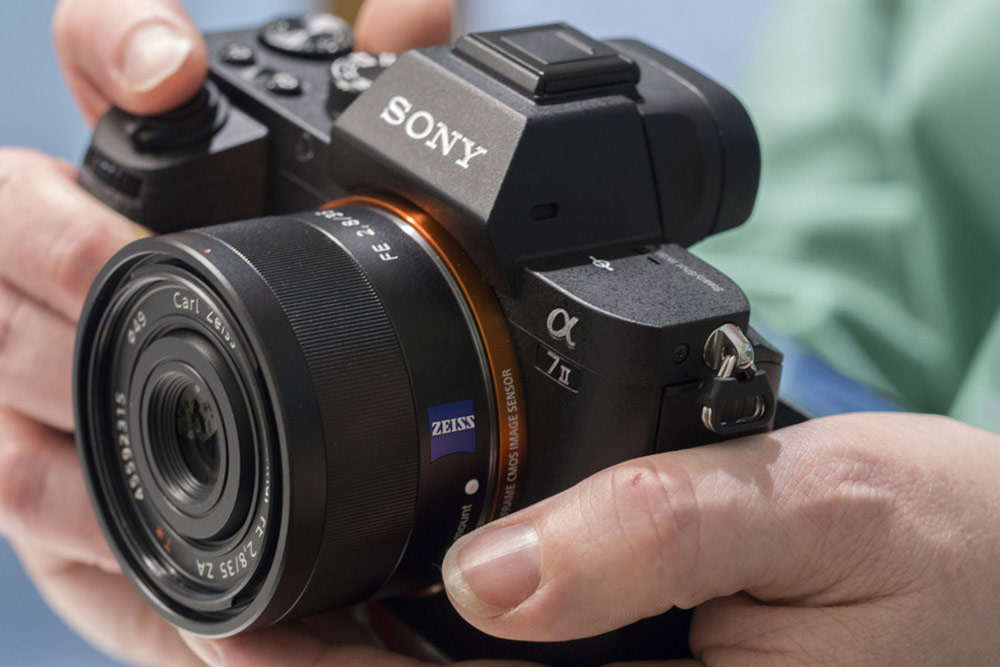Good news for shooters on a budget – a list of the best cameras under $1000/£1000 is going to include some absolutely fantastic cameras. Whether you’re looking for a second-hand pro camera, or something brand new and entry-level, there are loads of excellent options out there. In fact, we had a hard time narrowing our list down to ten!
We’ve kept the options restricted to interchangeable-lens system cameras, as this is likely what somebody with a budget of $1000/£1,000 is going to be looking for. If you think you’d prefer a fixed-lens camera, check out our list of the best compact cameras. For this list, you’re going to be choosing between DSLRs and mirrorless cameras.
If you’re buying new at $1000/£1,000 you’ll be looking for entry-level to mid-range cameras. Step into the second-hand market and you can expect to see professional and enthusiast models. We’ve included all types in our guide, to give you plenty of choice. We collected some key specs you’ll want to be mindful of when picking your new camera under $1000/£1000. Read our useful tips at the end of this guide.
Best cameras under $1000 / £1000: the quick list
Looking for the best deal on cameras under $1000 / £1000? Not only will you find the best new and second-hand cameras, but you’ll also find some of the best camera deals, as our ‘Buy now’ buttons automatically take you to the best prices, from trusted retailers, plus you’ll also find a list of other retailers below each camera, so you can find the right deal for you.
- Best mirrorless Canon under $1000/£1000: Canon EOS R10 – Buy now
- Best mirrorless Nikon under $1000/£1000: Nikon Z50 – Buy now
- Best Olympus under $1000/£1000: Olympus OM-D E-M10 Mark IV – Buy now
- Best camera for vlogging under $1000/£1000: Panasonic Lumix G100 – Buy now
- Best camera for beginners under $1000/£1000: Canon EOS 250D (Rebel SL3) – Buy now
- Best camera for sports photography under $1000/£1000: Sony A6400 – Buy now
- Best camera for street photography under $1000/£1000: Fujifilm X-T30 II – Buy now
- Best camera for wildlife under $1000/£1000: Panasonic Lumix G9 – Buy now
- Best camera for landscape under $1000/£1000: Nikon D810 – Buy now
- Best camera for events under $1000/£1000: Sony A7 II – Buy now
Why you can trust Amateur Photographer
We spend many hours testing every product we recommend, in detail, in a variety of situations and shooting scenarios, and only use experts for our reviews, so you can be sure that you’re getting the best products. Find out more about our expert writers.
Best Canon
Best mirrorless Canon under $1000/£1000: Canon EOS R10
Amateur Photographer verdict
The R10 handles well, and delivers exceptional autofocus and continuous shooting capabilities, but note there are a limited selection of compatible lenses- Fast autofocus and fast burst
- Affordable entry point for EOS R
- Great APS-C image quality
- Few native RF-S lenses
- Slim shot buffer
At a glance:
- £899/$979 body only
- 24.2MP APS-C sensor
- ISO 100-32,000 (expandable to 100 to 51,200)
- 23fps shooting (electronic shutter)
- 4K 30p video (4K 60p with crop)
- 2.36m-dot viewfinder
- 3-inch vari-angle LCD
The Canon EOS R10 is an exceptional offering from Canon, being one of the smaller and lighter mirrorless cameras in the Canon collection. This entry-level model should be attractive to both smartphone and DSLR shooters who want to move to mirrorless. Keep in mind as well that if you already have a collection of Canon DSLR-fitting lenses, the EF-to-RF mount adapter allows you to use them on the EOS R10 with full functionality, including autofocus.
Stand-out features of the Canon EOS R10 include the superb autofocus system and high-quality video (Full HD shooting at up to 120fps). It’s also possible to record 4K video at 60fps, albeit with a 1.6x crop. The large ISO range, and burst mode of up to 23fps when shooting using the electronic shutter, are also useful. The buffer isn’t huge, at 29 raw files at 15fps, or 21 files at 23fps, but for one of the best cameras under $1000/£1000, this is to be expected.
Canon RF mount lenses are mostly designed for full-frame, this makes them larger and heavier, so they not balance well on this small APS-C body. Alternatively you can use Canon EF-S mount lenses via a mount adaptor.
Best for: wildlife and sports photography
Best mirrorless Nikon under $1000/£1000: Nikon Z50
Amateur Photographer verdict
Nikon’s APS-C format mirrorless offers an excellent electronic viewfinder, responsive touchscreen and fast autofocus- Excellent electronic viewfinder
- Shoots at high ISOs
- Silent shooting mode
- Port is Micro USB, not USB-C
- Mode dial easily knocked
At a glance:
- £899 / $856 body only
- 20.9MP APS-C sensor
- Nikon Z-mount
- 11fps continuous shooting with AE/AF
- Tilting touchscreen
- 2.36m-dot viewfinder
- 4K video at 30p
The Nikon Z50 is a five-star camera with many enticing features such as 4K video and a tilting touchscreen. The Z50 was Nikon’s first DX-format (APS-C) mirrorless Z-mount camera, and it is compatible with a wide range of excellent lenses, including F-mount DSLR lenses via the FTZ adapter. This gives the user plenty of options.
In our 2019 review, we found the electronic viewfinder and responsive touchscreen to enhance our shooting experience, and were impressed by the 11fps continuous shooting and responsive autofocus system.
It’s worth noting that the Z50 is almost identical spec-wise with the newer Nikon Z30. However, this model does not include a viewfinder. The Z30 retails for almost £200 cheaper than the Z50 but does include a more advanced video system that has been designed to entice vloggers.
Best for: portrait shooters
Best Olympus under $1000/£1000: Olympus OM-D E-M10 Mark IV
Amateur Photographer verdict
A lovely little camera that’s a joy to use and delivers great pictures, the EM10 Mark IV features a flip screen and a compact size with a simple- Tiny and portable
- Loads of MFT lenses
- 5-axis stabilisation
- Smaller sensor than APS-C
- No mic port
At a glance:
- £679 / $649 body-only
- 20MP Four Thirds sensor
- ISO 200-25,600 (expandable to ISO 80-25,600)
- Up to 15fps shooting
- 121-point contrast-detect AF
- 5-axis in-body stabilisation
The Olympus (now OM-System) E-M10 range represents their entry level OM-D mirrorless models, and sits between the simpler PEN series and the higher-end, enthusiast-focused E-M5, as well as the new flagship OM-1.
When we reviewed the Olympus OM-D E-M10 Mark IV back in 2020, we found it produced excellent colours straight from JPEG. We also appreciated its stylish and well-built body for a camera at this level, which we found easy to operate while offering room to grow.
The E-M10 Mark IV has a great set of advanced features for a camera of this level, including a 121-point contrast-detect AF system and 5-axis in body image stabilisation.
Best for: beginners to enthusiasts
Best camera for vlogging under $1000/£1000: Panasonic Lumix G100
Amateur Photographer verdict
A pocket sized camera with good image quality for both stills and video, the 4K crop can be troublesome, but overall it is a competent camera that serves as a great entry-point to the MFT system- Excellent built-in mic setup
- Impressive EVF for the price
- Slow-mo and time-lapse options
- Electronic stabilisation incurs 4K crop
- Not the best AF system
At a glance:
- £569 / $497 with 12-32mm lens
- 20.3MP Four Thirds sensor
- Contrast-detect autofocus with 49 points
- ISO 100-25,600
- 10fps continuous shooting
- 4K 30p
The Panasonic Lumix G100 is part of the Micro Four Thirds system with the Olympus OM-D E-M10 Mark IV featured above, meaning they can both use the same lenses. Like all Panasonic Lumix G cameras from the past few years, it is capable of shooting excellent 4K video – however the difference with the G100 is that it has been specifically optimised for vloggers.
This means you get a three-capsule built-in mic setup, powered by Nokia’s OZO audio, which delivers sound that’s a cut above what you’d expect for a camera of this type. It’s particularly good for isolating speech from background noise, and is cleverly aided in doing so by the camera’s face-detection system.
The G100 costs a little more than £500 or $400 with a 12-32mm lens, giving us plenty of change from our $1000/£1,000 budget for an extra Micro Four Thirds lens or two. Panasonic’s Depth From Defocus AF system is showing its age (and has since been retired for the full-frame S5 cameras), but otherwise this is a solid entry-level choice.
Best for: Vloggers on a budget
Read our review of the Lumix G100
Best camera for beginners under $1000/£1000: Canon EOS 250D (Rebel SL3)
Amateur Photographer verdict
Generous features and easy to use, the EOS 250D is an entry level DSLR with scope to advance your photography. It delivers good image quality and vibrant colours.- Excellent battery life
- Optical viewfinder
- Lightweight build
- Rudimentary 9-point AF system
- No weatherproofing
At a glance:
- £599 / $649 body only
- 24.1MP APS-C sensor
- Dual Pixel CMOS AF
- 5fps continuous shooting
- Articulating monitor
- 4K 30p
Although mirrorless has made a massive impact on the camera market, there are still photographers who prefer the build and handling of a DSLR system. The main advantages of a DSLR over mirrorless are the optical viewfinder and longer battery life – plus, they are also a bit cheaper. The Canon EOS 250D is a great choice, and a worthy contender for any amateur or beginner photographers.
The small compact body is comparable to a mirrorless camera in size, weighing a mere 449g. Other great features include the 24.1MP APS-C sensor and Dual Pixel CMOS autofocusing that gives pin-sharp results in stills and video.
If a DSLR is the way you want to go, check out our other recommendations of the best Canon DSLRs you can buy.
Best for: Beginners who want space to improve
Best camera for sports photography under $1000/£1000: Sony A6400
Amateur Photographer verdict
It is one of the more expensive cameras on our list, but it also delivers the goods. It is a versatile camera with snappy autofocus and excellent image quality in almost any shooting situation- Compact in size
- Reliable autofocus
- Loads of E-mount lenses
- Boxy, uninspiring design
- No in-body stabilisation
At a glance:
- £849 / $898 body only
- 24.2MP APS-C CMOS sensor
- ISO 100-32,000 (expandable to 100-102,400)
- 11fps continuous shooting
- 2.36m-dot electronic viewfinder
- 3-inch, 921,600-dot tilting touchscreen
When we reviewed the Sony A6400 back in 2019, we gave it a solid 4 stars. We were impressed by the excellent autofocus tracking feature, producing high quality images in almost any shooting scenario. We also appreciated how compact it is in size, with a solid construction. For any action, event, wildlife or sports photographer, the Sony A6400 is a superb of the best cameras under $1000/£1000, as the autofocus system is one of the best for a camera at this price point.
The Sony A6400 is not perfect though, as the design of the camera is unfortunately a bit dated, and the lack of in-body image stabilisation is disappointing. If these aspects don’t concern you, then this camera is well worth considering as it’s a great shooter that will produce high-quality imagery.
Best for: sports photography
Best camera for street photography under $1000/£1000: Fujifilm X-T30 II
Amateur Photographer verdict
As expected from Fujifilm cameras the X-T30 delivers great JPEGs with vibrant colours straight out of camera, and its compact size and fast burst mode make it ideal for street photographers- Gorgeous image quality
- Fast burst shooting
- Excellent X-mount lens range
- No in-body stabilisation
- On the pricey end, body-only
At a glance:
- Fujifilm X-T30 II – £769 / $899 body only
- 26.1MP X-Trans CMOS IV Sensor
- ISO 160-12,800 (expandable to 80-51,200)
- Up to 30fps continuous shooting with electronic shutter (cropped), 20fps uncropped
- 3-inch 1.62m-dot, tilting touchscreen
- 4K 30p video
- Wi-Fi and Bluetooth built-in
The Fujifilm X-T30 II is a top-notch camera that works out as excellent value for money. The X-T30 II upgraded the Fujifilm X-T30 (and before that, the X-T20) and was well received across the industry, including by our review team, who gave it the full five stars.
The Fujifilm X-T30 II doesn’t only look good on paper – it delivers when put through its paces. The impressive specs such as the 20-30fps continuous shooting and 26.1MP X-Trans CMOS IV Sensor (as used in the flagship X-T4) perform as well as you’d expect, and even JPEGs straight from the camera produce lovely colours.
On the downside, in-body image stabilisation (IBIS) isn’t included in the X-T30 II like it is in Fuji’s X-S10 listed above. However, this camera retails for a cheaper price, so is worth considering on that basis.
Best for: budget-conscious street photographers
Best camera for wildlife under $1000/£1000: Panasonic Lumix G9
Amateur Photographer verdict
A robust, weather sealed MFT camera with a generous range of available lenses. With in-body image stabilisation and 4K recording, it is not only ideal for wildlife and action stills but video too- Great for outdoor shooting
- Excellent 4K quality
- High-Resolution stitch mode
- Smaller sensor
- High end of £1,000/$1,000 budget
At a glance:
- £899 / $997 body only
- 20.3MP Micro Four Thirds MOS sensor
- ISO 200-25,600 (expandable to ISO 100-25,600)
- 60fps continuous shooting
- Five-axis Dual IS II image stabiliser
- 4K video up to 60p (150Mbps bit-rate)
The only camera from Panasonic to make it on to our list is the Panasonic Lumix G9, but what a camera! The G9 is now available staggeringly cheap at under £1000, and is a great option for wildlife and adventure photographers, as can be seen in our Panasonic Lumix G9 field test by Dan Milner back in 2018.
Using a Four Thirds sensor, this camera comes with 20.3MP of resolution. However, the G9 also has the option to shoot at 80MP with Panasonic’s High-Resolution mode. Take note though you are somewhat limited here, as the camera needs to stitch images together to make the high-res composite, meaning it’s only really suitable for stationary subjects.
Videographers and vloggers will appreciate the Lumix G9’s high-quality 4K, and its in-body image stabilisation also comes in handy. A great all-rounder that has plenty to offer.
Best for: wildlife and adventure photographers
Best camera for landscape under $1000/£1000: Nikon D810
Amateur Photographer verdict
The D810’s full frame sensor delivers impressive amount of detail and high dynamic range at low ISO settings, letting you extract lots of details from deep shadows in post processing.- Hardy build
- Gorgeous full-frame quality
- Significant price drop
- Aging autofocus system
- Big, bulky, heavy
At a glance:
- Used around $500 / $699
- 36.3МР full-frame ѕеnѕоr
- 51-point AF system
- 5fрѕ continuous shooting іn FХ fоrmаt (7fрѕ іn DХ fоrmаt)
- ІЅО 64-12,800 (ехрandable tо 32-51,200)
- Маgnеѕіum-аllоу bоdу wіth duѕt- аnd wеаthеr-ѕеаlіng
The full-frame Nikon D810 is a wonderful camera that produces excellent results and is built like a tank. When this camera was launched in 2014 it was aimed at professionals, Nikon having upgraded and fixed all the niggles of the D800 and D800E. The price tag of £2,700 was unaffordable for most non-professionals. Fast-forward eight years, and a second hand one with a low shutter count can be picked up for a great price, easily making it one of the best cameras for under $1000/£1000.
One of the D810’s greatest selling-points is its full-frame 36.3MP sensor that even in today’s market is decent in size. The 51-point AF focus system isn’t as impressive as when it was launched compared with more modern cameras, however the results cannot be faulted and images from the camera are sharp.
This camera won’t suit everyone, as the heavy build (despite being almost bulletproof) will put some off. However, for a landscape enthusiast, or a professional just starting out on a tight budget, this camera is a wonderful choice.
Best for: landscape photographers
Best camera for events under $1000/£1000: Sony A7 II
Amateur Photographer verdict
It is already ten years old, but you get a lot of imaging power and other outstanding specs under the hood. Its full-frame sensor paired with 5-axis IBIS make it ideal for events hand held shooting.- Broad ISO range
- Excellent full-frame image quality
- Powerful 5-axis stabilisation
- Full HD, not 4K
- Only 5fps burst
At a glance:
- Used from around £649 / $668
- 24.3MP full-frame sensor
- ISO 100-25,600 (50-25,600)
- 5 axis in-body image stabilisation
- 3.0-inch TFT LCD screen
- Full HD 60p video
- Weight approx 556g
And last but by no means least, the Sony A7 II makes it onto our top ten. This camera was announced back in 2014, but while the technology is not Sony’s latest. there are very few new mirrorless cameras with a full-frame sensor you can get for under £1000.
One of the flagship features of the Sony A7 II is its in-body 5 axis image stabilisation feature, which pioneered the technology at the time. The generous ISO range is also noteworthy for a camera at this price point.
If you’re after a no-thrills, simple mirrorless shooter with a full-frame sensor, and you primarily want to take still images, the Sony A7 II is really your best option for less than £1000.
Sony Alpha A7II
Best for: event photographers
How to choose the best camera under $1000/£1000
Questions to ask yourself:
- What camera type do I want?
- What image sensor type and resolution does the camera offer?
- How big are the LCD screen and viewfinder (size and resolution)?
- What features does it include?
- What is the weight and build?
- What lens mount does the camera support and what lenses are compatible?
Here are the main points to look for when choosing your budget DSLR or mirrorless camera.
Image sensor size and resolution
Although we often first take into account how many megapixels a camera has, this really isn’t the most important aspect. The type of sensor generally matters more. There are various sensor types, ranging from medium format, full frame (FF), APS-C (crop sensor), Micro Four Thirds (MFT) and 1-inch, down to a 1/2.3-inch and smaller. In most DSLR and mirrorless cameras, you’ll find either a full-frame, APS-C or MFT sensor.
An advantage of a full-frame sensor is that it is better at dealing with image noise at high ISOs compared with an APS-C or MFT sensor, which makes it more useful in low light. It also has an increased ability to produce dreamy background blur at wider aperture settings, which is great for portraiture. For more on this have a look at our guide to APS-C vs Full-frame vs MFT.
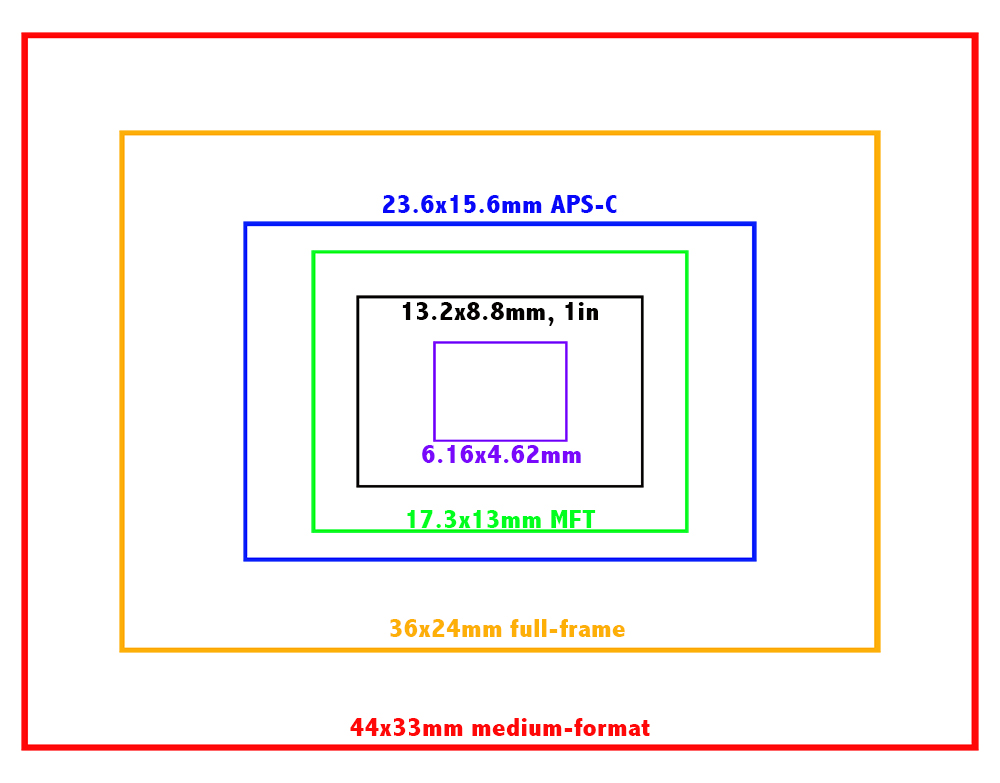
Features
Cameras have a lot of features and functions. Depending on what you plan to shoot, the main ones to consider will likely be ISO range, burst mode capability and video quality. If you are going to be shooting in low light, then a larger ISO range is hugely valuable. If video is a requirement, then check the camera’s video recording specs – its resolution and frame rate. And if you want to capture fast action, then you’ll need a camera with a faster burst mode. You may need to compromise when shopping on a budget, so prioritise one or two key features.
For a new camera up to £1000/$1000, you can expect to get some excellent features, such as 4K video and a generous ISO range. However, where these cameras differ in relation to more expensive ones is often in the build quality and image processing speeds. DSLRs and mirrorless cameras have similar but different feature sets; check out our guide to DSLR vs mirrorless if you want to know the key differences.
If you’re a professional and on a budget, we suggest you take a look at the second-hand camera market. There are many excellent DSLRs and mirrorless models available – just check the shutter count and camera condition before buying.
Lenses
Finally, do some research on lenses before you buy into a camera system. Each manufacturer’s system is different and there is a large variety of lenses out there. If you are switching from one system to another, and want to keep some or all your old lenses, you’ll need to purchase a compatible adapter mount to ensure they fit. This may affect lens functionality and mean you can’t use some features like autofocus, so double-check before making the switch.
If you’ve got more money to spend, then have a look at our guide to the best cameras for under £2000 / $2000 and the best cheap full frame cameras to buy.
Our guide includes cameras that are available in the US and the UK, with $1000 / £1000 as our rough guide. Bear in mind that prices and exchange rates do fluctuate in both territories and while we keep this guide regularly up to date, sometimes a camera will nudge over the $1000 / £1000 mark in one territory or another. In general, it won’t be too significant.
Text by Claire Gillo, with contributions from Jon Stapley.
Further reading:
- Best cameras for photography students
- Best cameras for astrophotography
- How to clean your camera and equipment
- Is this the end for compact cameras?

